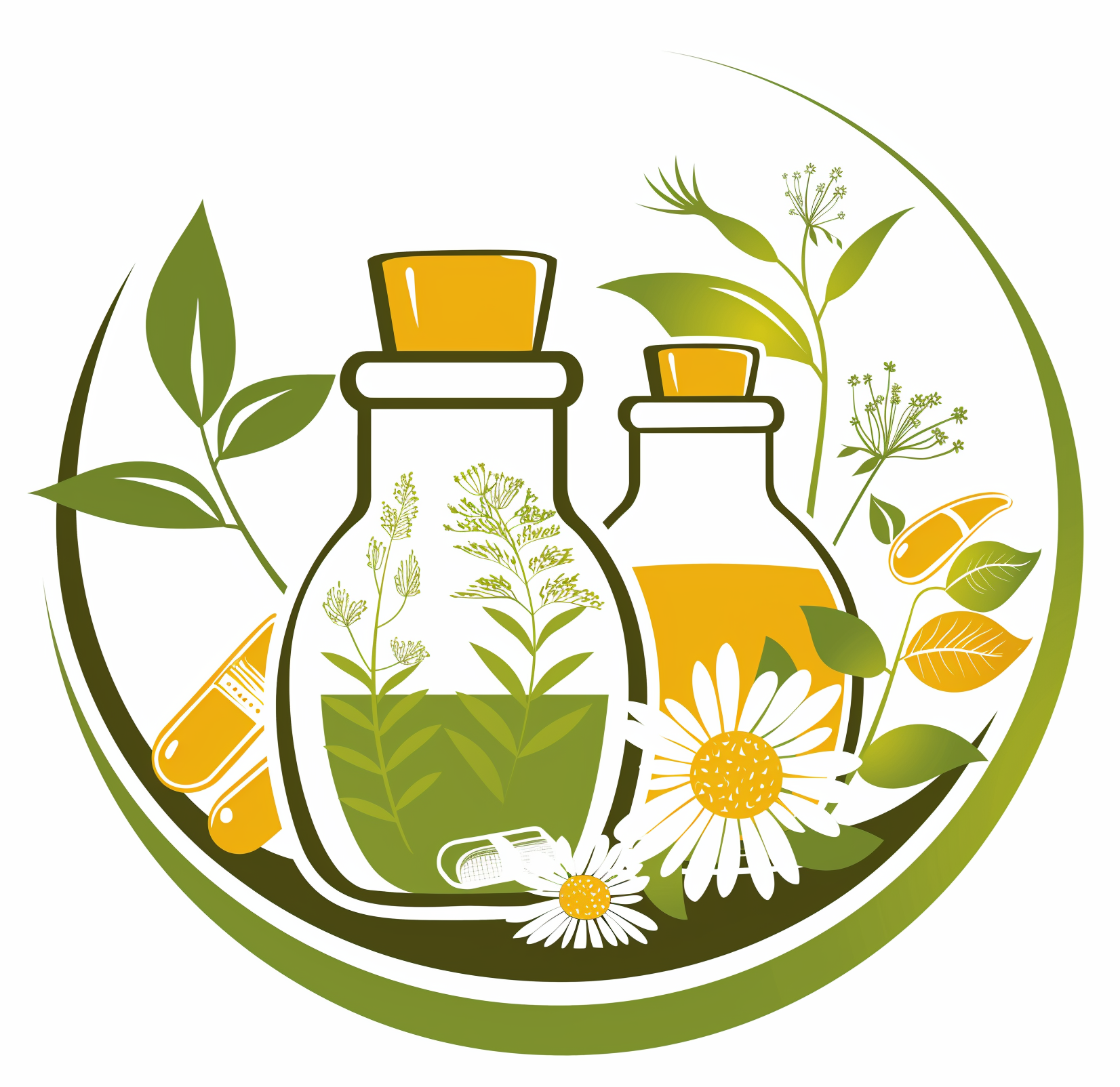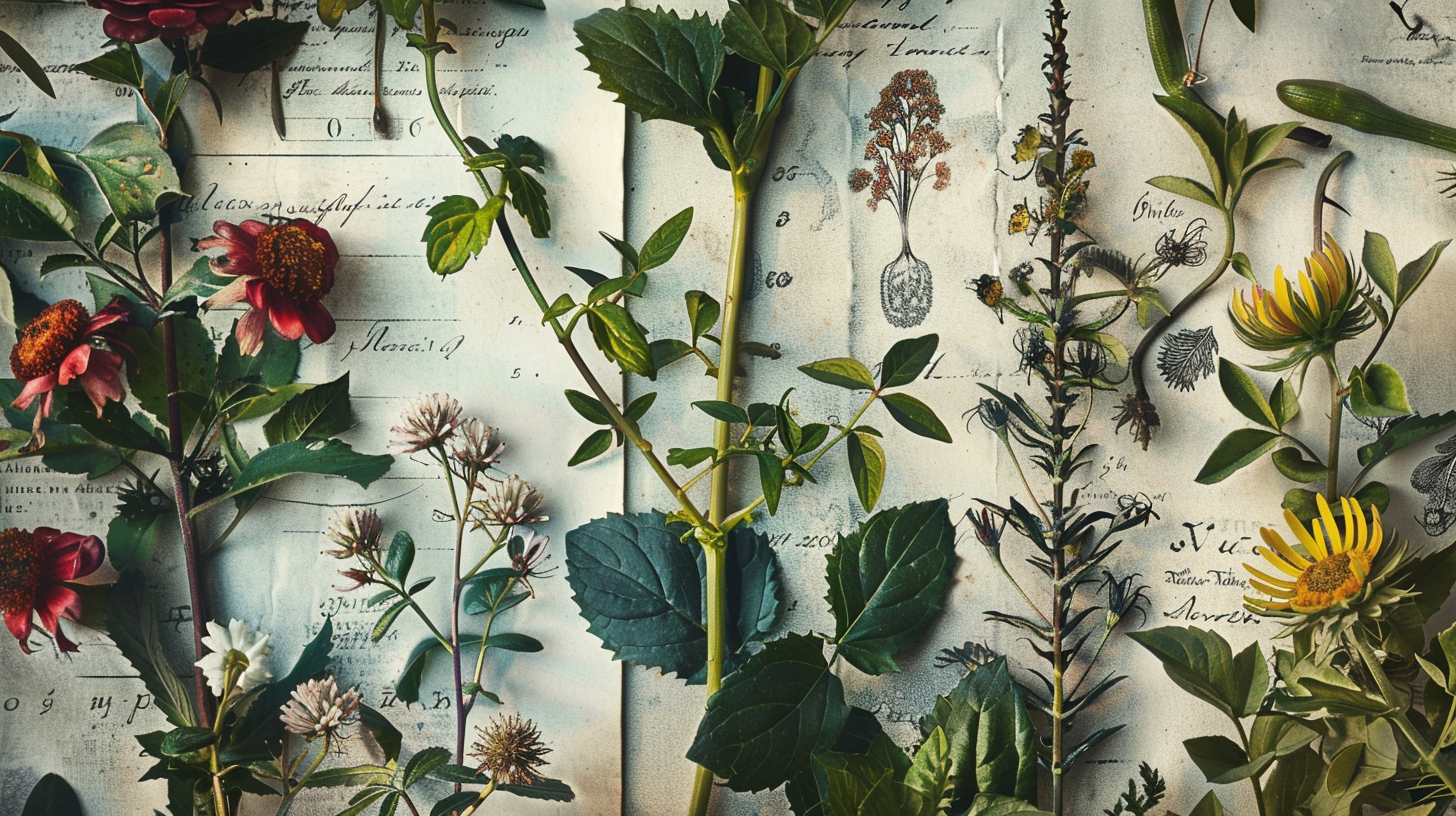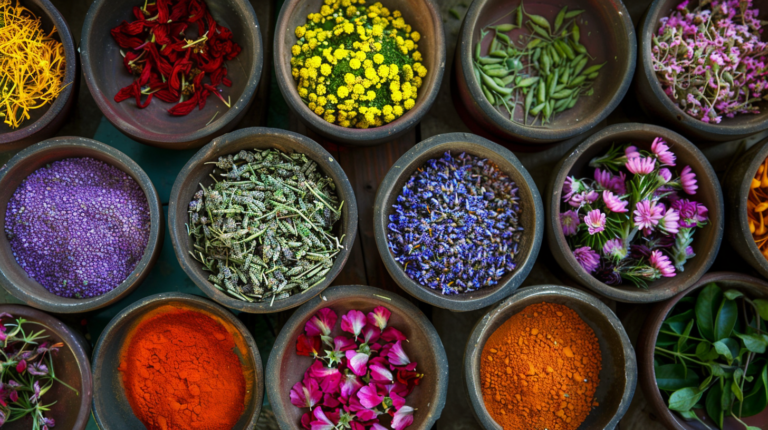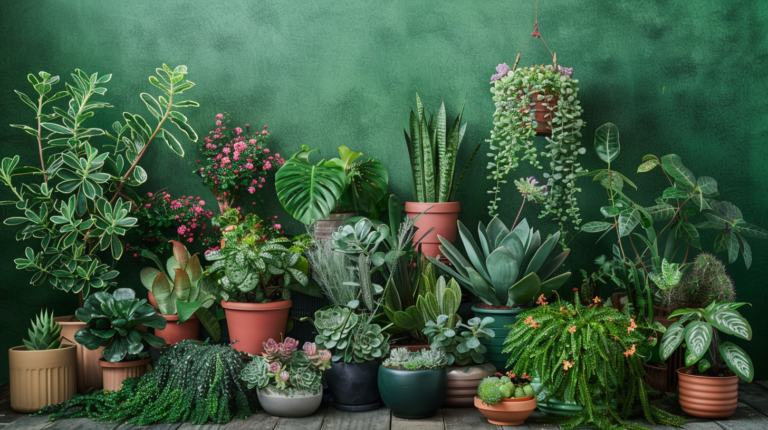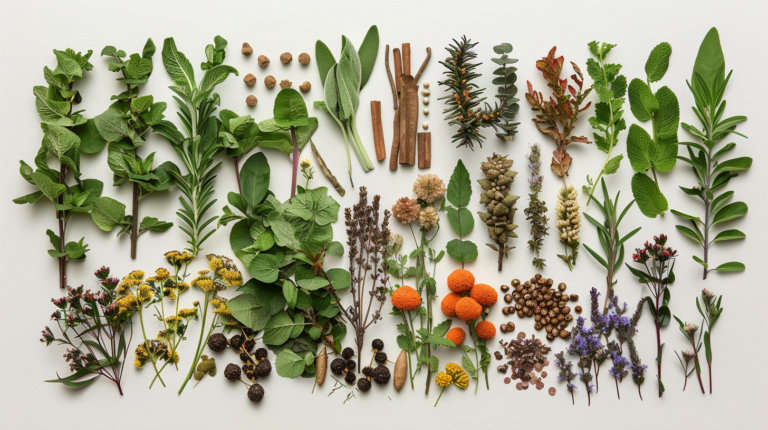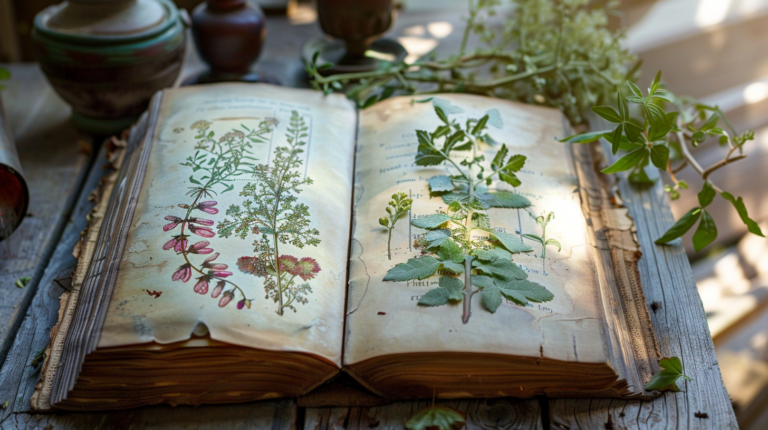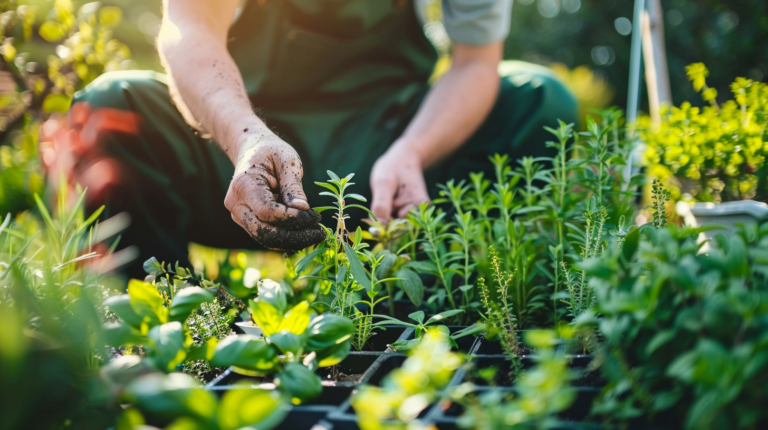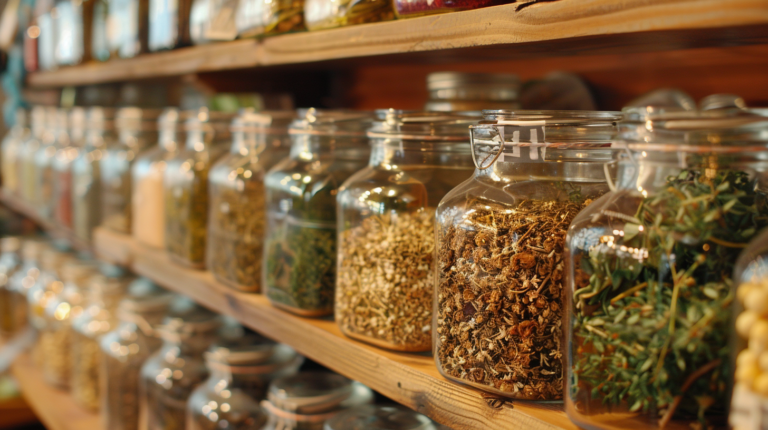Discover the Power of Medicinal Plants: History to DIY Recipes
Imagine feeling out of balance, plagued by chronic ailments, and constantly seeking quick fixes in the form of pills and drugs. It’s a common scenario where the effects seem temporary at best, and the root cause remains unaddressed. This is where the wisdom of nature steps in.
Medicinal plants, steeped in tradition and backed by modern research, provide a holistic approach to health and wellbeing. Unlike medicines that merely suppress symptoms, these natural herbs work harmoniously with the body, offering healing from within. The best part? They are accessible, sustainable, and offer fewer or no side effects, unlike conventional medicine.
Dive into the world of herbal medicine, where ancient wisdom meets modern science, and discover how medicinal plants can be your key to lasting health.
History of Medicinal Plants
Ancient Uses and Traditions
Imagine, if you will, a time when every illness had its remedy growing right outside your door. Medicinal plants, revered and honored, were often humanity’s primary source of medicine. From the towering Himalayas of India to the serene landscapes of ancient China, people relied on herbs such as turmeric, ginseng, and garlic for their healing properties.
The Greeks and Romans were no strangers to the medicinal properties of plants either. Hippocrates, often dubbed the “Father of Medicine,” documented the use of herbs like willow bark to treat pain and fever. This natural precursor to modern aspirin is just one of the many examples of how our ancestors harnessed nature’s pharmacy.
Traditional Chinese medicine (TCM) stands as a testament to the ancient wisdom of incorporating medicinal plants into daily health regimes. Herbs like ginseng and licorice root (Glycyrrhiza glabra) were esteemed for their ability to balance the body’s energies, fortifying the immune system and promoting longevity.
In the lush rainforests of Madagascar and the verdant hills of Morocco, indigenous tribes still pass down the knowledge of plant medicines orally from generation to generation. Plants like periwinkle (Catharanthus roseus) and argan (Argania spinosa) have been used for centuries to treat a variety of ailments, embodying the bond between nature and healer.
Evolution through the Ages
As mankind evolved, so did our understanding and utilization of medicinal plants. The Middle Ages saw a shift as monastic gardens in Europe became reservoirs of medicinal knowledge. Monks meticulously cultivated herbs like sage (Salvia officinalis) and rosemary (Rosmarinus officinalis), not only for their culinary delights but for their therapeutic values too.
The illustrious Persian physician Avicenna, born in the 10th century, wrote “The Canon of Medicine,” a seminal text that influenced both Western and Islamic medicine. His insights on the effects and properties of herbs laid the groundwork for modern pharmacology. We see a legacy extending to institutions like the National Institutes of Health, where modern research continually affirms the efficacy of traditional herbal treatments.
During the Renaissance, the resurgence of botanical studies led to the development of herbariums and the formalization of herbal knowledge. Europe embraced botanical exploration, resulting in comprehensive works like “De Materia Medica” by Dioscorides, detailing the uses of over 600 plants.
In Texas and elsewhere in the United States, Indigenous tribes like the Comanche and Cherokee have long revered plants such as echinacea and yarrow for their powerful healing abilities. As European settlers arrived, they learned to appreciate and adopt these native medicinal herbs, integrating them into their own practices.
Modern-Day Applications
Fast forward to today, the humble aloe vera plant sits on many windowsills, a silent guardian against burns and scrapes. It’s fascinating to see how traditional uses of medicinal plants have seamlessly transitioned into contemporary applications. The food drug administration now even validates many herb-based treatments that our ancestors swore by.
Lavender (Lavandula angustifolia) graces us with its calming scent, not only found in serene fields of France but in essential oil diffusers across urban homes. As an engaged gardener, one of my favorite pastimes is nurturing lavender plants in my garden, knowing they’re not just for beauty but for their medicinal properties like reducing anxiety and promoting sleep.
Echinacea, known for its immune-boosting abilities, is now a staple in many households, especially during flu season. Herbal teas made from chamomile (Matricaria chamomilla) provide relief for digestive issues and aid in restful sleep, proving that these ancient remedies have a firm place in our modern world.
In the United Kingdom, initiatives by institutions like the Royal Botanic Gardens, Kew, are paving the way for a deeper understanding of plant based medicines. In fact, research articles available on google scholar detail the powerful anti-inflammatory and antioxidative properties of herbs which are saving countless lives.
Many individuals today, myself included, are turning back to nature’s wisdom. Growing your own medicinal plants right in your backyard isn’t just an act of self-sufficiency; it’s a way to connect with millennia of traditional medicine knowledge. With a bit of research and a green thumb, we can cultivate a personal apothecary that rivals any pharmacy aisle!
Top Medicinal Plants and Their Benefits
Aloe Vera
Healing Properties
Oh, Aloe Vera! The miracle plant sitting quietly with its fleshy, succulent leaves, just waiting to rescue you from burns and scrapes. Did you know Aloe has medicinal properties that have been celebrated for centuries? The Egyptians dubbed it the “plant of immortality.” Its gel contains vitamins A, C, E, and B12, which aid in skin regeneration. Moreover, it’s a godsend for those suffering from psoriasis and eczema. This humble plant boosts your health by supporting the digestive system and even aiding in weight loss.
How to Use Aloe Vera
For burns, slice open a leaf, scoop out the gel, and apply it directly to the burn. You can blend the gel to make a refreshing drink, but be cautious and avoid the yellow latex found beneath the leaf’s skin, which acts as a powerful laxative. Store-bought Aloe Vera gels are convenient but ensure they are certified organic and free from artificial additives.
Lavender
Calming Effects
Ah, the sweet scent of lavender! Not just a feast for the senses, but a remedy for the soul. Known scientifically as Lavandula angustifolia, this herb is fabulous for stress relief and promoting sleep. It helps reduce anxiety, lift your mood, and even ease pain. The National Institutes of Health have praised its effectiveness in treating insomnia and depression.
Uses in Daily Life
Place a sachet of dried lavender under your pillow or add a few drops of lavender oil to your bath for a luxurious experience. You can also brew some lavender tea or use the flowers in baked goods. Just hold your nose in closely and breathe deeply; the aromatherapy alone can be enough to brighten a gloomy day.
Echinacea
Immune System Support
Meet echinacea, the immune system’s loyal guard dog. Native Americans have long utilized this flower to fend off infections and boost immunity. In the world of plant based medicines, it is remarkable for its antimicrobial and anti-inflammatory properties. Clinical trials have shown that taking echinacea can reduce the chances of catching a cold by 58% and shorten the duration of colds by 1.4 days.
Preparations and Dosage
Available as tinctures, capsules, or teas, echinacea should ideally be taken at the first sign of illness to ramp up its effects. A typical dosage might be 2 to 3 ml of echinacea tincture taken three times daily, but always consult with a healthcare provider to ensure the right dosage for you.
Chamomile
Benefits for Digestion and Sleep
Chamomile, or Matricaria chamomilla, isn’t just for bedtime tea. This dainty flower helps soothe digestive issues, from bloating to indigestion. Its anti-inflammatory properties make it an amazing ally for gentle healing.
Tea and Tinctures
A cup of chamomile tea before bed can ease you into restful slumber. It’s also used in tincture form to quell anxiety and stomach upsets. Steep a tablespoon of dried chamomile flowers in hot water for 5-10 minutes for a comforting, potent brew.
How to Grow Medicinal Plants at Home
Essential Gardening Tips
Nurturing medicinal plants at home is both fulfilling and practical. Start with seeds from a reputable source, ensuring they’re marked as heirloom open pollinated for the best genetic diversity. Make sure your garden spot gets six to eight hours of sunlight daily and use organic soil rich in nutrients.
- Water regularly, but avoid overwatering.
- Use natural pest deterrents like neem oil.
- Rotate your plants seasonally to maintain soil health.
Best Soil and Climate Conditions
Different plants have different needs. For example, aloe vera thrives in well-drained, sandy soil and a warm climate. Lavender prefers slightly alkaline soil and a sunny environment. Chamomile enjoys cool conditions and can tolerate partial shade. Aim to mimic each plant’s natural habitat for the best growth.
Common Pests and Solutions
Even the healthiest gardens face pest issues. Aphids, spider mites, and whiteflies are common attackers. To combat these:
- Introduce beneficial insects like ladybugs to keep pest populations down.
- Use insecticidal soap or neem oil spray.
Creating Your Own Medicinal Garden
Choosing the Right Plants
Begin with beginner-friendly options like aloe vera, chamomile, and lavender. These not only serve numerous medicinal purposes but are also quite hardy and require minimal care.
Designing Your Garden Space
Plan your garden layout with accessibility and aesthetics in mind. Arrange shorter plants in the front and taller ones at the back. Consider using raised beds or containers for better soil drainage and easier maintenance.
Container Gardening for Limited Spaces
If you’re short on outdoor space, container gardening is an excellent alternative. Use pots with good drainage and select smaller plant varieties or dwarf hybrids. Herbs like rosemary, thyme, and peppermint thrive well in pots.
Medicinal Plant Recipes
Herbal Teas and Infusions
One of my favorites is a calming chamomile-lavender tea. Combine equal parts of dried chamomile and lavender in a tea infuser. Pour in hot water and let it steep for about 5 minutes. Strain and enjoy with a touch of honey.
Homemade Tinctures and Extracts
Making your own tinctures is simple. For an echinacea tincture, fill a jar halfway with dried echinacea roots, then cover with high-proof alcohol. Let it sit in a dark place for 4-6 weeks, shaking it occasionally. Strain and store in a dark glass bottle for use as needed.
Topical Applications: Salves and Balms
Aloe Vera and Lavender Balm: Perfect for burns and skin conditions. Melt 1/4 cup of beeswax with 1/2 cup of coconut oil. Add 1/4 cup of aloe vera gel and 20 drops of lavender essential oil. Mix well and pour into a sterilized container. Allow to cool before sealing.
Recipes for Common Ailments
For sore throats, try a licorice and honey syrup. Combine 1 part chopped licorice root, 1 part wild cherry bark and enough water to cover. Simmer until liquid is reduced by half, strain and add honey to taste.
Safety and Precautions
Potential Side Effects
Even natural remedies have their risks. Aloe Vera can act as a strong laxative if ingested improperly. Echinacea may cause allergic reactions in some. Always do a patch test before applying any new herb topically.
Interactions with Medications
Herbal medicines can interact with prescription drugs. For example, echinacea may interfere with immunosuppressive therapies. Consult your healthcare provider before mixing herbal remedies with prescribed medications.
Guidelines for Safe Use
Always follow recommended dosages and methods of preparation. Using fresh, high-quality herbs ensures efficacy and reduces the risk of side effects. Be especially cautious when using herbs on children, the elderly, or those with compromised immune systems.
Sources and Further Reading
Top Medicinal Plant Books
- Medicinal Herbs: A Beginner’s Guide by Rosemary Gladstar
- The Herbal Medicine-Maker’s Handbook by James Green
Trusted Online Resources
- National Institutes of Health (NIH)
- NLM PubMed Central (PMC)
- Google Scholar
Workshops and Courses
Participating in workshops and courses can provide hands-on experience and a deeper understanding of herbal medicine. Look for local botanic gardens, universities, or online platforms offering certified programs.
Personal Stories and Anecdotes
My Journey with Medicinal Plants
My love affair with medicinal plants began two decades ago when I found a forlorn aloe plant on a supermarket clearance rack. I brought it home, nursed it back to health, and discovered the joys of using it for minor burns. From there, my garden grew and so did my knowledge and passion.
Lessons Learned
Gardening teaches patience and observation. Each plant has its rhythm and needs. Over the years, I have learned the importance of soil health, organic pest control, and the benefits of companion planting.
Success Stories from Readers
One reader shared how growing lavender helped them manage anxiety. Another found relief from chronic digestive issues through regular consumption of chamomile tea. Stories like these remind me why I love sharing this knowledge with the world.
